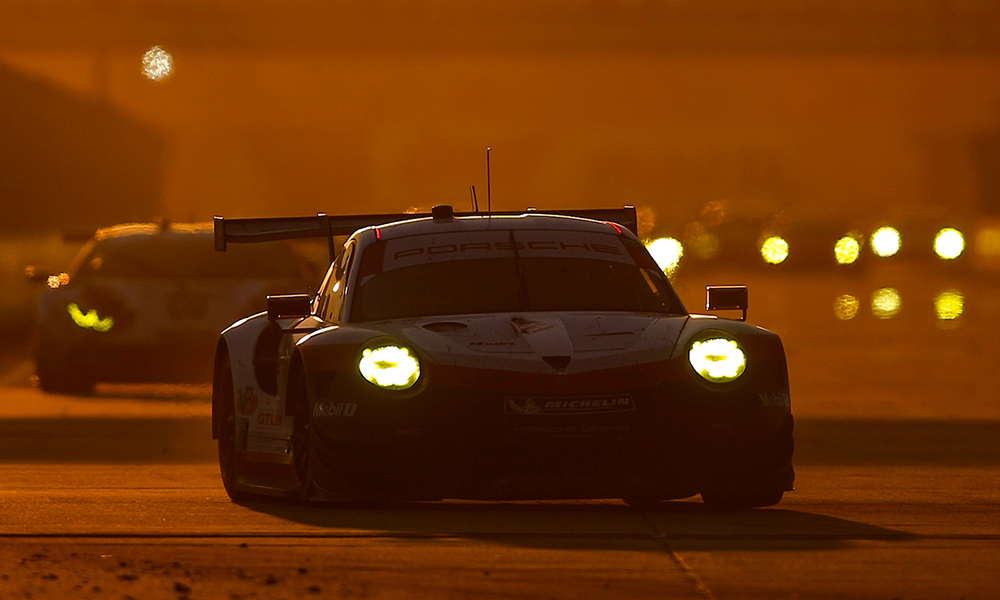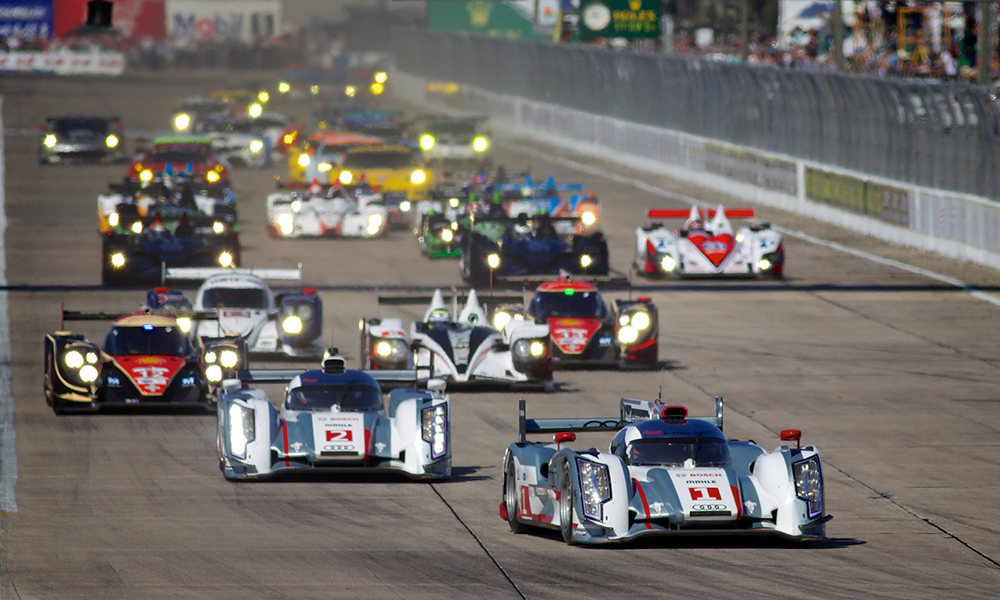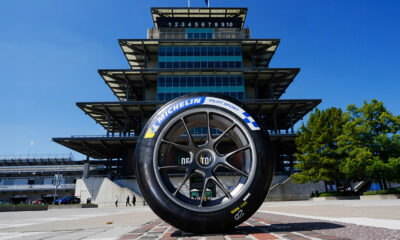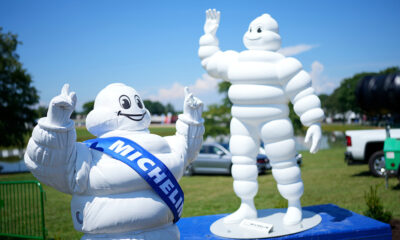
Photo: Jake Galstad/IMSA
Question: When is 12 more than half of 24?
Answer: When it is the Mobil 1 Twelve Hours of Sebring, the next stop on the IMSA WeatherTech SportsCar Championship.
Measured in time, the race is just half as long as the Rolex 24 at Daytona and the 24 Hours of Le Mans. Unlike them, Sebring even starts and finishes on the same day.
Just don’t expect the Michelin tire engineers or IMSA WeatherTech SportsCar Championship drivers and teams to agree that the 24-hour races are twice as tough as Sebring.
Fast, demanding and with washboard bumps reminiscent of midwest spring potholes, Sebring is a very complete test of drivers, teams and cars.

Photo: Michelin
The Ultimate Stress Test
“Sebring is a great race and the ultimate shakedown test for Le Mans as the bumps and loads here will expose any weaknesses. Sebring really stresses the suspension, powertrains, gearbox, tires and drivers,” said Chris Baker, director of motorsport, Michelin North America.
While Daytona at 3.56 miles and Sebring at 3.74 miles are nearly equal in track length, the high banks of Daytona place a priority on top speed and low downforce aerodynamic packages similar to Le Mans, albeit without the banking.
The 17-turn airfield circuit, with its array of fast corners, heavy braking zones, transitions from asphalt to concrete and back together with the myriad bumps, requires higher downforce packages and increased mechanical grip.

Photo: John Dagys
Audi Measured Every Bump
So significant are the bumps at Sebring that when Audi entered LMP1 competition in ALMS, the German maker spent days driving a sensor-laden production car around the track to create a highly detailed computer model that captured each bump and surface transition across the entire width of the track.
“Those of us who had the privilege of seeing the Audis work their magic at Sebring can attest that the track mapping done by Dr. Ullrich and the Audi team did not go to waste,” said Baker.
“Simply watching the Audis carve serenely through Turn 1, in comparison to other prototypes’ bouncing and yawing was ample proof of the benefits of sweating the details.”
Audi won Sebring 11 times, Le Mans 13 times and still holds the all-time Sebring qualifying lap and race distance records.

Photo: Rick Dole/IMSA
Tire Management
Although Sebring is only half the race time, the GTLM class teams will likely use as many tires in the race as they use in the 24 hours on the super smooth Circuit de la Sarthe.
WeatherTech Championship GTLM entries are allocated 22 sets of Michelin tires per car for race week, which includes four practice sessions totaling 4.5 hours, plus qualifying and the 20-minute race morning warm up.
Michelin engineers indicated that most GTLM teams used 18 or 19 sets of tires for the race week last year.
Given that allocation, most teams will use six to eight sets before the race starts, leaving 14-16 sets of tires available for the 12-hour race.
“Unlike Le Mans, we will likely see most of our GTLM teams change tires on each full stint stop,” said Baker.
By comparison, Michelin GTE-Pro teams at Le Mans typically use 14-16 sets in the actual 24 Hours of Le Mans race.
To further the distinction, the six-hour WEC races allocate GTE-Pro entries just four sets of tires for qualifying and the race, making double-stinting essential.

Photo: Michelin
See the (Day) light
Daytona, Sebring and Le Mans are all very different in terms of daylight and that impacts tire temperatures and tire selections.
With daylight savings time kicking in and a 10:40 a.m. local start time, Sebring enjoys approximately nine hours of daylight before the 7:35 p.m. sunset, leaving the final three hours of the race quickly transition into darkness for the finish.
By contrast, Daytona started at 2:40 p.m., leaving just three hours 18 minutes of the race before sunset. In mid-June, Le Mans starts at 3:00 p.m., providing nearly seven hours of daylight before darkness arrives at the 8.467-mile circuit.
That level of light is important in tire selection.
“At Sebring we start in late morning and usually see track temperatures progress throughout the day, then drop off fairly significantly after sunset until the finish.
“The track temperatures drop pretty quickly once the sun goes down at Sebring,” said Robbie Holley, Michelin race operations manager.
“More than 30 percent of the track is concrete and those sections don’t absorb the heat like asphalt does.
“The concrete sections are typically 10-15 degrees cooler than the asphalt sections during the day and they drop off really fast when the sun starts to drop, so we want to anticipate that change.”
Michelin Knows Sebring
Michelin is the official tire of Sebring International Raceway, the only tire maker and one of only five manufacturers (Audi, Chevrolet Corvette, Ferrari and Porsche) in the Sebring Hall of Fame.
#RespectTheBumps

Photo: Michelin

























